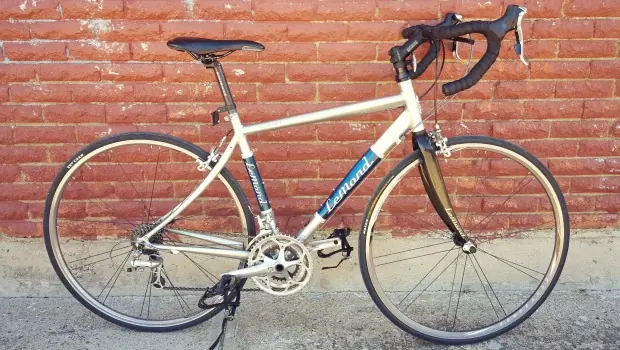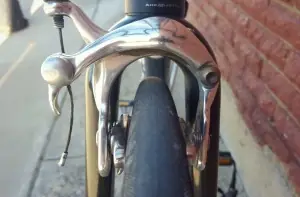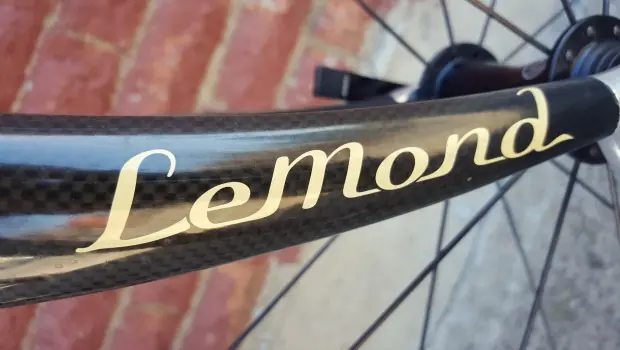
Follow Active.com Editor Brian Kendall as he trains for his first century ride. Check out his last entry here.
Seven months out from my first century ride and a stark reality overcomes me: there's no way I can pedal 100 miles on my commuter bike (aka, a rigid-forked mountain bike from 1995).
While this bike works well enough for my short commute and lazy rides around the park, I get shaky knees riding the thick-tired monstrosity on any street with a speed limit of above 25 mph.
So, armed with a valid excuse to buy a new bike—every cyclist's favorite activity—I head to my local bike shop and make an important discovery: I cannot afford a new bike.
Now a reluctance to throw down thousands of dollars on two wheels and a saddle is, in my opinion, no cause for embarrassment. I mean, most of these non-motorized two-wheeled machines cost more than my motorized, four-wheeled car. That's a hell of an investment for something that doesn't even play music.
So, I take my debit card to the opposite end of the store—the side that smells more like a hand full of dirt than brand new rubber—and, after perusing the used bikes for a half hour, I fail to find a bike that suits my budget or my fancy.
Lesson 1: Don't Settle.

Unless you're buying a bike for an occasional cruise around the neighborhood, you have the right to be picky when choosing your next steed (yes, even when buying used).
One of the most important things to remember when shopping for a used bike is to find the one that best suits you. If you happen across an old green Huffy with a saddle that's been to hell and back, don't be afraid to pass (even if it does fall within your meager budget).
There are plenty of stray bikes in the world looking for a good garage to stay in; you just have to know where to search.
Lesson 2: Look Everywhere (Especially Craigslist).
Following my disappointing trip to the local bike shop, I resisted the urge to go to Wal-Mart (I've been told to avoid department store bikes) and cracked open my laptop to do some serious at-home shopping.
There are two fantastic things about local classifieds or Craigslist. First, if you buy straight from an owner, he or she can tell you the bike's history. And don't be shy about putting the owner through some intense questioning—find out if the bike has been in a crash or how many owners its had. There is no Carfax for bikes, so hearing it straight from the source is the only way you're going to find out.
Second, many local bike shops advertise their bikes in local classifieds or on Craigslist. So, while the shop just a mile away might not have what you're looking for, you might find your future two-wheeler in a shop that dodged your radar or a few towns away.
Also, remember to check eBay. While any self-respecting roadie would warn against buying a bike without riding it first (sound advice), you can still find local shops and people advertising on eBay. And, if you've ridden something similar before, are aware of your size and feel confident in your choice, don't be afraid to pull the trigger and bid. And if you're going the eBay route, check out BikesDirect.com, where you can find decent deals on solid used gear.

Lesson 3: Size Matters.
In case you don't already know, bikes are not "one size fits all." To the contrary, there is a whole world beyond just small, medium and large.
When shopping for a bike, you can't overstate the importance of knowing what frame size you need. And if you're wondering what the heck I'm talking about, there are some great resources online to find the right frame for your size. Or, if you're averse to clicking links and learning things on the Internet, you can find out by straddling the top tube with your feet on the ground. There should be a 1-inch clearance between your body and the top tube.
After you learn your frame size, you can get more particular with a bike's overall fit. First, adjust the saddle to a height where your knees are only slightly bent on the down pedal. Once you've got the saddle in a comfy position, you can see if the stem length and angle agree with your riding position.
If you're buying a bike with drop handlebars, you don't want the brakes too far to reach. Yes, this is bad, you must have access to your brakes.
In a normal riding posture, you want some bend in your arms with your back at a 45-degree angle. But who am I to tell you? In the end, comfort is king.


